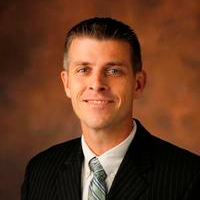
Josh Caldwell, director of the Interdisciplinary Material Sciences program and professor of mechanical engineering, has been awarded a grant from the Office of Naval Research’s Multidisciplinary University Research Initiative. The five-year grant, which provides up to $1.5 million in funding annually, will be shared among Vanderbilt University, the University of Iowa, the University of Minnesota and Stanford University to study twist optics to better predict emergent properties created by stacking and misorienting various two-dimensional materials.
“Once again Vanderbilt’s School of Engineering is helping push the boundaries in materials science to develop innovations that will shape our future,” said Philippe M. Fauchet, Bruce and Bridgitt Evans Dean of Engineering. “I applaud Professor Josh Caldwell and his colleagues for their pathbreaking work in this field and am eager to see how it leads to new technological advances.”
In twist optics, when two crystal structures—which can be nanoscale or less in thickness—are stacked, the interactions between the crystals can lead to properties not seen in the individual crystals on their own. Recent discoveries show that changing the angle of how the layers are oriented with respect to each other can lead to emergent properties.
“People often use Legos as an example when they explain two-dimensional materials and twist optics, but that may not be a good example since Legos only allow two fixed orientations,” Caldwell said. “A better analogy would be a kaleidoscope with two color disks where someone can rotate the disks with respect to each other, with no restriction on the angles between the two. How the disks interact depends on their alignment.”
This project will work to develop the guiding principles underlying such layer-to-layer interactions to predict the emergent properties that occur when different combinations of materials are stacked and misoriented. The difficulty in that task is that there are near-infinite possibilities with regard to which materials are stacked and the misorientation angles.
“How the disks interact depends on their alignment. If I take material A and misorient it with respect to a layer of material B, the new emergent properties aren’t just the sum of the parts,” Caldwell explained.
The project will use machine learning, group theory, and crystal symmetry to create predictive algorithms that will hopefully ease the task. The team also will probe the local optical and electro-optic properties that emerge. This work could eventually lead to new laser sources, especially in the infrared, controllable nano-scale optical components for microchips and smaller components for electronic devices. All are important to military and commercial product development.
Caldwell will serve as the study’s principal investigator with five investigators from three other universities:
- Thomas Folland, assistant professor, Department of Physics and Astronomy, University of Iowa
- Tony Low, associate professor, Department of Electrical and Computer Engineering, University of Minnesota
- Felipe Jornada, assistant professor, Materials Science and Engineering, Stanford University
- Jennifer Dionne, senior associate vice provost of research platforms/shared facilities, Stanford University
- Tony Heinz, professor, Applied Physics and Photon Science, Stanford University
MURI awards are among the most prestigious grants offered by the Department of Defense. In fiscal year 2022, only 28 research teams pursuing basic research received awards from the program. The MURI program’s multidisciplinary approach serves to stimulate innovation, accelerate research progress and expedite transition of results into military and commercial applications.
The grant proposal was supported by the Office of the Vice Provost for Research and Innovation, which provided travel funds for project investigators to meet at Stanford University to discuss the project and proposal.